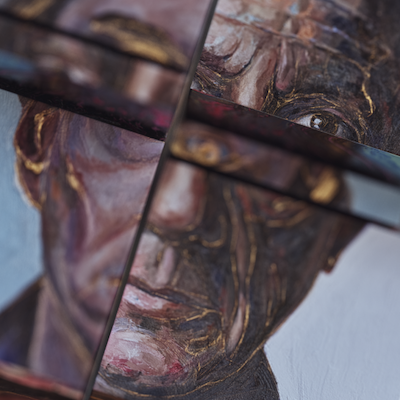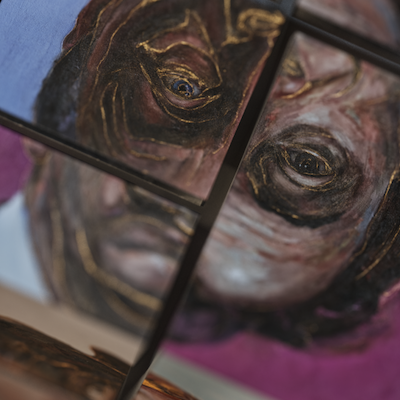Photography has long been a medium that has relied on physical prints and exhibitions to showcase and sell artwork. However, with the rise of digital media, photographers are now exploring new ways to sell and exhibit their work, and non-fungible tokens (NFTs) are emerging as a potentially transformative technology. In this article, we will explore the potential of NFTs for photographers, how they work, and the copyrighting aspects to consider.
What are NFTs?
NFTs are unique digital assets that are verified on a blockchain, a decentralized and secure digital ledger. This means that NFTs can be bought, sold, and traded like any other physical asset, but they exist entirely in the digital realm.
One of the main benefits of NFTs is that they can represent ownership of unique digital assets, such as art, music, and photography. This allows photographers to sell their work as digital collectibles, rather than physical prints or exhibitions.
How do NFTs work?
NFTs are created using smart contracts, which are self-executing contracts with the terms of the agreement between buyer and seller being directly written into lines of code. When an NFT is created, the smart contract specifies the details of the asset, including its ownership, provenance, and any other relevant information.
Once an NFT is created, it is stored on the blockchain and can be bought, sold, and traded like any other asset. The ownership of an NFT is recorded on the blockchain, and the smart contract ensures that the terms of the sale are followed.
There are several platforms and startups that allow artists and photographers to benefit from NFTs. Some popular platforms include Nifty Gateway, OpenSea, and SuperRare. Startups such as ArtByte, Artax, and ArtVenture are also providing new and innovative ways for artists and photographers to monetize their work through NFTs.

What are the benefits of NFTs for photographers?
There are several potential benefits of NFTs for photographers:
- Ownership: NFTs allow photographers to sell their work as digital collectibles, rather than physical prints or exhibitions. This means that they can retain ownership of their work and control how it is exhibited and sold.
- Royalties: NFTs can be set up to pay ongoing royalties to the artist, providing a new revenue stream for photographers.
- Reach: NFTs can be bought and sold globally, allowing photographers to reach a wider audience and potentially sell their work to collectors anywhere in the world.
- Authenticity: NFTs provide a way for photographers to prove the authenticity of their work, as the ownership and provenance of the asset is recorded on the blockchain.
- Longevity: Digital assets can be preserved indefinitely, ensuring that a photographer’s work will be accessible for generations to come.
Examples of successful NFT sales by photographers
In recent years, the world of photography has undergone a significant shift with the emergence of NFTs.
Photographers are now able to monetize their work in a new way by selling unique digital assets on blockchain platforms. These assets can include anything from a single photograph to a series of images, and can even include videos and 3D art.
Some notable examples of photographers using NFTs include Kevin Abosch, who sold a photograph of a potato for over $1 million, and Mike Winkelmann, also known as Beeple, who sold a digital artwork for a record-breaking $69 million at Christie’s auction house. Other photographers, such as Trevor Jones (Trevor Jones, sold a collection of his photographs as NFTs for a total of $100,000 ) and Mads Madsen, are also utilizing NFTs to sell their work and build a new revenue stream.




Andreas Gursky, whose photograph “Rhein II” sold for over $4.3 million as an NFT is another impressive example.
These examples demonstrate the potential of NFTs to revolutionize the photography industry by giving photographers more control over the distribution and ownership of their work. As the use of NFTs continues to grow, it will be interesting to see how they will impact the way photographers create, share and sell their art.

Copyrighting aspects to consider
One of the key issues to consider when using NFTs to sell photography is copyright. Photographers should ensure that they own the copyright to the images they are selling as NFTs, or have permission from the copyright holder to do so.
It is also important to consider the terms of use for the images. For example, the buyer of an NFT may not have the right to reproduce the image or use it for commercial purposes. These terms should be clearly stated in the smart contract for the NFT.
In addition to copyright, photographers should also consider other legal issues, such as trademark and privacy. For example, if an image contains the likeness of a recognizable person, the photographer should obtain their consent before selling the image as an NFT.
Other precaution to have in mind
In addition to registering copyright, Photographers using NFTs can take several precautions to avoid infringement and issues.
If a photographer is using someone else’s work or content, they should obtain permission from the copyright owner before including it in their NFT. It’s best for artists to use original content that they have created themselves. This eliminates the risk of infringing on someone else’s rights. Keep records of their original work and any licenses or permissions photographers obtain for use of other people’s content can help to prove ownership and avoid disputes.
Photographers can also use watermarks to protect their work and prevent others from using it without permission. And they should consider seeking legal advice if they are unsure about the legality of using a specific piece of content or if they have concerns about infringement or copyright issues. Finally, it’s important to consider using a reputable NFT platform that has strong anti-counterfeiting measures in place.

Conclusion
NFTs are emerging as a potentially transformative technology for photographers, providing a new way to sell and exhibit their work. While there are several benefits to using NFTs, it is important for photographers to carefully consider the copyrighting and legal aspects of selling their work as digital collectibles.
Photos Credits: Rostislav Uzunov, Nathan Watson, Trevor Jones, Andreas Gursky, Arthur Mazi.









